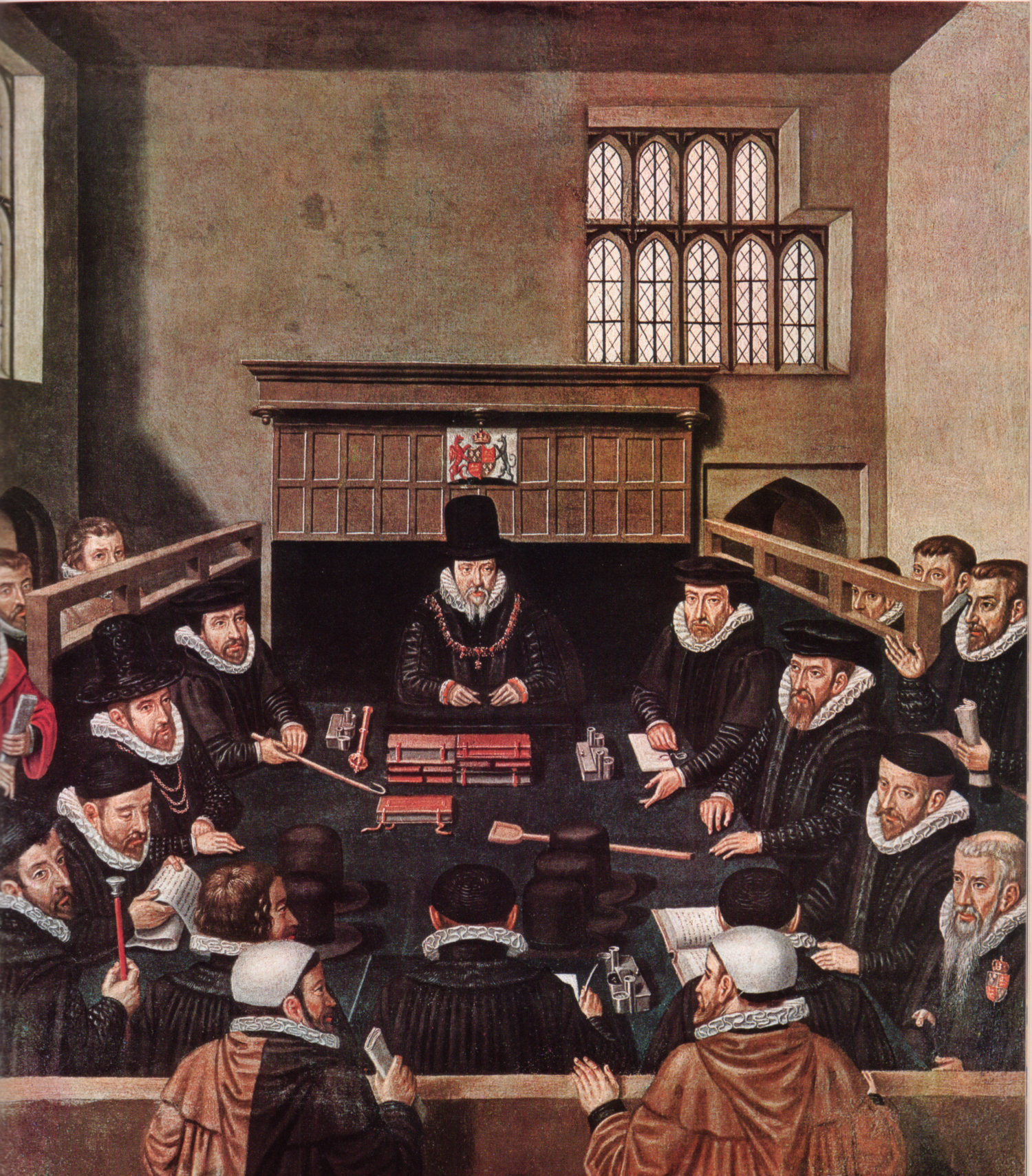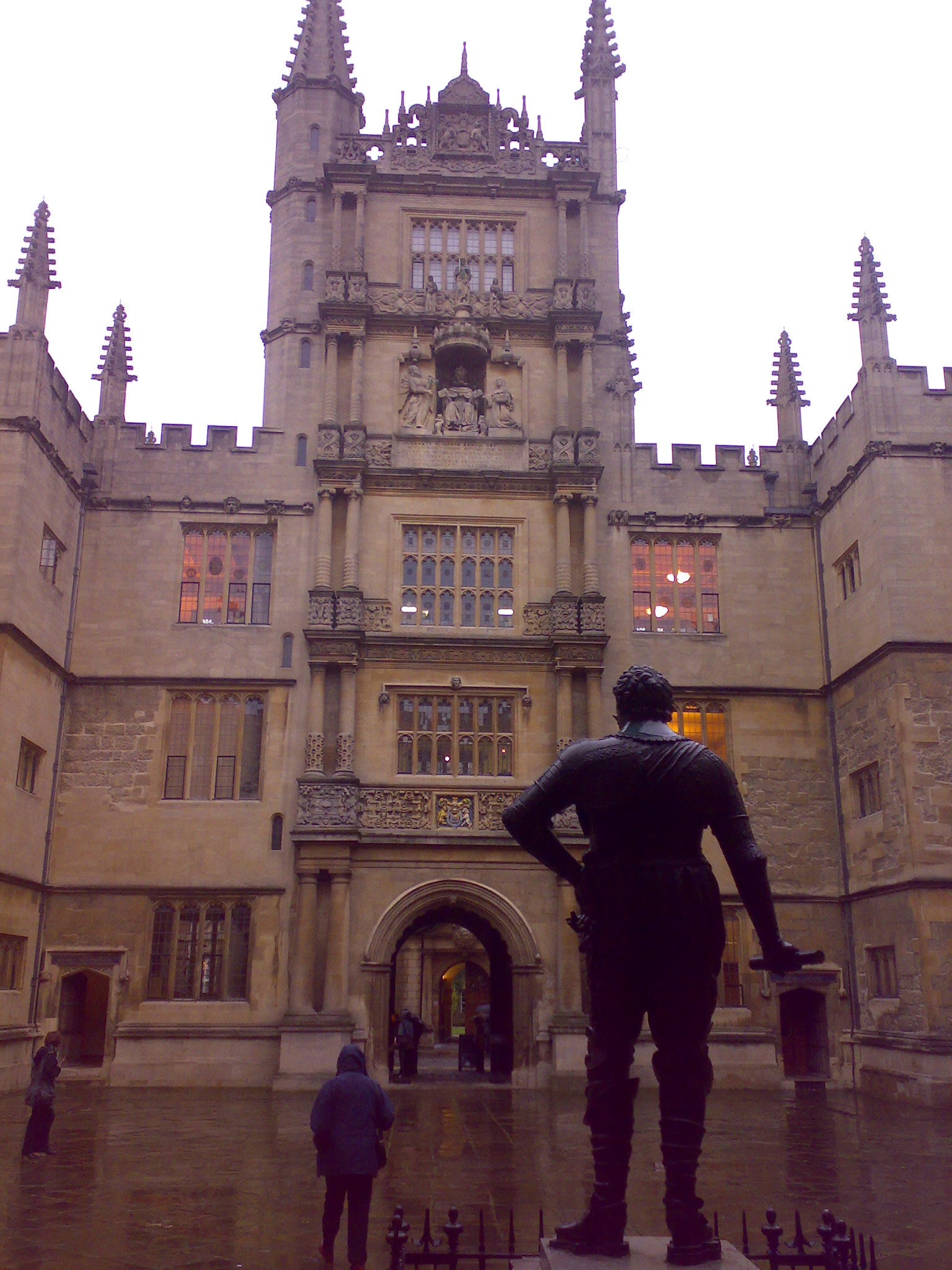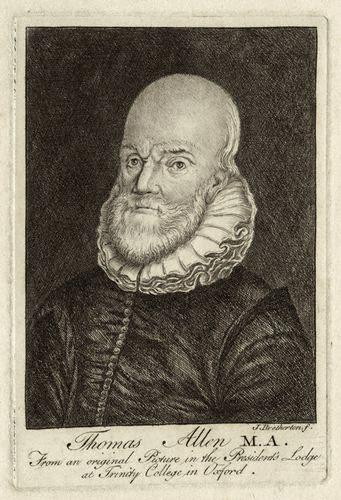|
Henry Billingsley
Sir Henry Billingsley (died 22 November 1606) was an English merchant, Lord Mayor of London and the first translator of Euclid into English. Early life He was a son of Sir William Billingsley, haberdasher and assay master of London, and his wife, Elizabeth Harlowe. He entered St. John's College, Cambridge, in 1551, and also studied at Oxford, where, under the tutelage of David Whytehead, he developed an interest in mathematics. His father died in 1553, and in the next year, his mother remarried to Sir Martin Bowes. He did not take a degree but was apprenticed to a London merchant. He became a freeman of the Worshipful Company of Haberdashers by patrimony in 1560. Career Billingsley prospered as a merchant. He was chosen sheriff of London in 1584 and alderman of Tower Ward in 1585. He became one of Elizabeth's four customs collectors in 1589. In 1596, he succeeded Sir Thomas Skinner as Lord Mayor of London, and was knighted in the following year. In 1603, he sat in Parliam ... [...More Info...] [...Related Items...] OR: [Wikipedia] [Google] [Baidu] |
Lord Mayor Of London
The Lord Mayor of London is the mayor of the City of London and the leader of the City of London Corporation. Within the City, the Lord Mayor is accorded precedence over all individuals except the sovereign and retains various traditional powers, rights, and privileges, including the title and style ''The Right Honourable Lord Mayor of London''. One of the world's oldest continuously elected civic offices, it is entirely separate from the directly elected mayor of London, a political office controlling a budget which covers the much larger area of Greater London. The Corporation of London changed its name to the City of London Corporation in 2006, and accordingly the title Lord Mayor of the City of London was introduced, so as to avoid confusion with the mayor of London. However, the legal and commonly used title remains ''Lord Mayor of London''. The Lord Mayor is elected at ''Common Hall'' each year on Michaelmas, and takes office on the Friday before the second Saturday ... [...More Info...] [...Related Items...] OR: [Wikipedia] [Google] [Baidu] |
John Dee (mathematician)
John Dee (13 July 1527 – 1608 or 1609) was an English mathematician, astronomer, astrologer, teacher, occultist, and alchemist. He was the court astronomer for, and advisor to, Elizabeth I, and spent much of his time on alchemy, divination, and Hermetic philosophy. As an antiquarian, he had one of the largest libraries in England at the time. As a political advisor, he advocated the foundation of English colonies in the New World to form a "British Empire", a term he is credited with coining. Dee eventually left Elizabeth's service and went on a quest for additional knowledge in the deeper realms of the occult and supernatural. He aligned himself with several individuals who may have been charlatans, travelled through Europe and was accused of spying for the English crown. Upon his return to England, he found his home and library vandalised. He eventually returned to the Queen's service, but was turned away when she was succeeded by James I. He died in poverty in London and ... [...More Info...] [...Related Items...] OR: [Wikipedia] [Google] [Baidu] |
Gloucestershire
Gloucestershire ( abbreviated Glos) is a county in South West England. The county comprises part of the Cotswold Hills, part of the flat fertile valley of the River Severn and the entire Forest of Dean. The county town is the city of Gloucester and other principal towns and villages include Cheltenham, Cirencester, Kingswood, Bradley Stoke, Stroud, Thornbury, Yate, Tewkesbury, Bishop's Cleeve, Churchdown, Brockworth, Winchcombe, Dursley, Cam, Berkeley, Wotton-under-Edge, Tetbury, Moreton-in-Marsh, Fairford, Lechlade, Northleach, Stow-on-the-Wold, Chipping Campden, Bourton-on-the-Water, Stonehouse, Nailsworth, Minchinhampton, Painswick, Winterbourne, Frampton Cotterell, Coleford, Cinderford, Lydney and Rodborough and Cainscross that are within Stroud's urban area. Gloucestershire borders Herefordshire to the north-west, Worcestershire to the north, Warwickshire to the north-east, Oxfordshire to the east, Wiltshire to the south, Bristol and Somerset ... [...More Info...] [...Related Items...] OR: [Wikipedia] [Google] [Baidu] |
Siston
Siston (pronounced "sizeton") is a small village in South Gloucestershire, England. It is east of Bristol at the confluence of the two sources of the Siston Brook, a tributary of the River Avon. The village consists of a number of cottages and farms centred on St Anne's Church, and the grand Tudor manor house of Siston Court. Anciently it was bordered to the west by the royal Hunting Forest of Kingswood, stretching westward most of the way to Bristol Castle, always a royal possession, ''caput'' of the Forest. The local part of the disafforested Kingswood became Siston Common but has recently been eroded by the construction of the Avon Ring Road and housing developments. In 1989 the village and environs were classed as a conservation area and thus have statutory protection from overdevelopment. History At the time of the Roman conquest the area was woodland, but there is evidence of Roman remains. It has been known throughout time as Sistone, Siston, Systun, Syton, and Sy ... [...More Info...] [...Related Items...] OR: [Wikipedia] [Google] [Baidu] |
Falmouth, Cornwall
Falmouth ( ; kw, Aberfala) is a town, civil parish and port on the River Fal on the south coast of Cornwall, England, United Kingdom. It has a total resident population of 21,797 (2011 census). Etymology The name Falmouth is of English origin, a reference to the town's situation on the mouth of the River Fal. The Cornish language name, ' or ', is of identical meaning. It was at one time known as ''Pennycomequick'', an Anglicisation of the Celtic ''Pen-y-cwm-cuic'' "head of the creek"; this is the same as Pennycomequick, a district in Plymouth. History Early history In 1540, Henry VIII built Pendennis Castle in Falmouth to defend Carrick Roads. The main town of the district was then at Penryn. Sir John Killigrew created the town of Falmouth shortly after 1613. In the late 16th century, under threat from the Spanish Armada, the defences at Pendennis were strengthened by the building of angled ramparts. During the Civil War, Pendennis Castle was the second to las ... [...More Info...] [...Related Items...] OR: [Wikipedia] [Google] [Baidu] |
Arwenack
Arwenack, historically in the parish of St Budock, Cornwall, is a historic manor on the site of what is today the town of Falmouth. It was partly destroyed in 1646, and only a remnant survives today. It was long held by the Killigrew family, which was responsible for the development of the town of Falmouth, Sir Peter Killigrew (died 1667), MP, having received a royal charter for its foundation in 1661. Etymology ''Arwenack'' is said to signify in the ancient Cornish language either "the beloved, still cove", or "upon the marsh". Descent de Arwenack The earliest recorded lord of the manor of Arwenack was the ''de Arwenack'' family:Vivian (1887), p.267 *Thomas de Arwenack *John de Arwenack, son and heir *Robert de Arwenack, son and heir, who died with no sons, leaving a daughter and sole heiress Jane de Arwenack, who married Simon Killigrew (fl.1377) Killigrew Simon Killigrew Simon Killigrew (fl.1377), married Jane de Arwenack, daughter and sole heiress of Robert de Arwen ... [...More Info...] [...Related Items...] OR: [Wikipedia] [Google] [Baidu] |
Cornish People
The Cornish people or Cornish ( kw, Kernowyon, ang, Cornƿīelisċ) are an ethnic group native to, or associated with Cornwall: and a recognised national minority in the United Kingdom, which can trace its roots to the ancient Britons who inhabited southern and central Great Britain before the Roman conquest. Many in Cornwall today continue to assert a distinct identity separate from or in addition to English or British identities. Cornish identity has been adopted by migrants into Cornwall, as well as by emigrant and descendant communities from Cornwall, the latter sometimes referred to as the Cornish diaspora. Although not included as an tick-box option in the UK census, the numbers of those writing in a Cornish ethnic and national identity are officially recognised and recorded. Throughout classical antiquity, the ancient Britons formed a series of tribes, cultures and identities in Great Britain; the Dumnonii and Cornovii were the Celtic tribes who inhabited wh ... [...More Info...] [...Related Items...] OR: [Wikipedia] [Google] [Baidu] |
Thomas Seckford
Thomas Seckford Esquire (1515 – 1587) was a senior lawyer, a "man of business" at the court of Queen Elizabeth I, a landowner of the armigerous Suffolk gentry, Member of Parliament,M.K. Dale, 'Seckford (Sakford), Thomas (1515/16-87), of Gray's Inn, London', in S.T. Bindoff (ed.), ''The History of Parliament: the House of Commons 1509-1558'' (from Boydell and Brewer 1982)History of Parliament OnlineAnon, 'Seckford, Thomas I (1515 or 1516-87), of Woodbridge and Ipswich, Suff. and Clerkenwell, London', in P.W. Hasler (ed.), ''The History of Parliament: the House of Commons 1558-1603'' (from Boydell and Brewer 1981)History of Parliament Online and public benefactor of the town of Woodbridge. He was one of the Masters in Ordinary of the Court of Requests to Queen Elizabeth, 1569-1587, and was Surveyor of the Court of Wards and Liveries 1581-1587. He built mansions in Woodbridge, Ipswich and Clerkenwell, and was at different times Steward of the Liberty of Ely (St Etheldreda) in S ... [...More Info...] [...Related Items...] OR: [Wikipedia] [Google] [Baidu] |
Princeton College
Princeton University is a private research university in Princeton, New Jersey. Founded in 1746 in Elizabeth as the College of New Jersey, Princeton is the fourth-oldest institution of higher education in the United States and one of the nine colonial colleges chartered before the American Revolution. It is one of the highest-ranked universities in the world. The institution moved to Newark in 1747, and then to the current site nine years later. It officially became a university in 1896 and was subsequently renamed Princeton University. It is a member of the Ivy League. The university is governed by the Trustees of Princeton University and has an endowment of $37.7 billion, the largest endowment per student in the United States. Princeton provides undergraduate and graduate instruction in the humanities, social sciences, natural sciences, and engineering to approximately 8,500 students on its main campus. It offers postgraduate degrees through the Princeton School o ... [...More Info...] [...Related Items...] OR: [Wikipedia] [Google] [Baidu] |
Brian Twyne
Brian Twyne (c. 25 July 1581 – 4 July 1644) was an antiquary and an academic at the University of Oxford. After being educated at Corpus Christi College, Oxford, and becoming a Fellow of the college in 1606, he published his one main work, a history of the university, in 1608. This was designed to prove that Oxford was older than Cambridge University, and has been described by a modern writer as a "remarkable achievement for a young scholar of twenty-eight." His main accomplishment was to play a leading role in the revision of the university statutes under William Laud (Chancellor of the University of Oxford and Archbishop of Canterbury). He was rewarded by appointment in 1634 to the new position of Keeper of the Archives, in which role he obtained a new royal charter for Oxford to confirm its rights and privileges, and helped the university in its disputes with the city authorities. Education and early career Brian Twyne was born on or near 25 July 1581 in Southwark, Sur ... [...More Info...] [...Related Items...] OR: [Wikipedia] [Google] [Baidu] |
Thomas Allen (mathematician)
Thomas Allen (or Alleyn) (21 December 154230 September 1632) was an English mathematician and astrologer. Highly reputed in his lifetime, he published little, but was an active private teacher of mathematics. He was also well connected in the English intellectual networks of the period. Early life He was born in Uttoxeter, Staffordshire. He was admitted scholar of Trinity College, Oxford, in 1561; and graduated as M.A. in 1567. In 1571 he left his college and fellowship, and moved to Gloucester Hall. He became known for his knowledge of antiquity, philosophy, and mathematics. At Gloucester Hall Gloucester Hall suited Allen, a sympathiser at least with Catholicism, because there was no stringent religious observance required there; indeed there was no chapel in the Hall. Allen's beliefs have been classified as "church papist", but also his posture as "crypto-Catholic": a Catholic faith combined with outward conformity to the Church of England. He joined there his friends Edmund ... [...More Info...] [...Related Items...] OR: [Wikipedia] [Google] [Baidu] |
Anthony Wood (antiquary)
Anthony Wood (17 December 1632 – 28 November 1695), who styled himself Anthony à Wood in his later writings, was an English antiquary. He was responsible for a celebrated ''Hist. and Antiq. of the Universitie of Oxon''. Early life Anthony Wood was born in Oxford on 17 December 1632, as the fourth son of Thomas Wood (1581–1643), BCL of Oxford, and his second wife, Mary (1602–1667), daughter of Robert Pettie and Penelope Taverner. Wood was sent to New College School in 1641, and at the age of twelve was removed to the free Lord Williams's School at Thame, where his studies were interrupted by Civil War skirmishes. He was then placed under the tuition of his brother Edward (1627–1655), of Trinity College, and, as he tells us, "while he continued in this condition his mother would alwaies be soliciting him to be an apprentice which he could never endure to heare of". He was entered at Merton College in 1647, and made postmaster, a type of scholar at Merton. In 1652 Wood ... [...More Info...] [...Related Items...] OR: [Wikipedia] [Google] [Baidu] |







